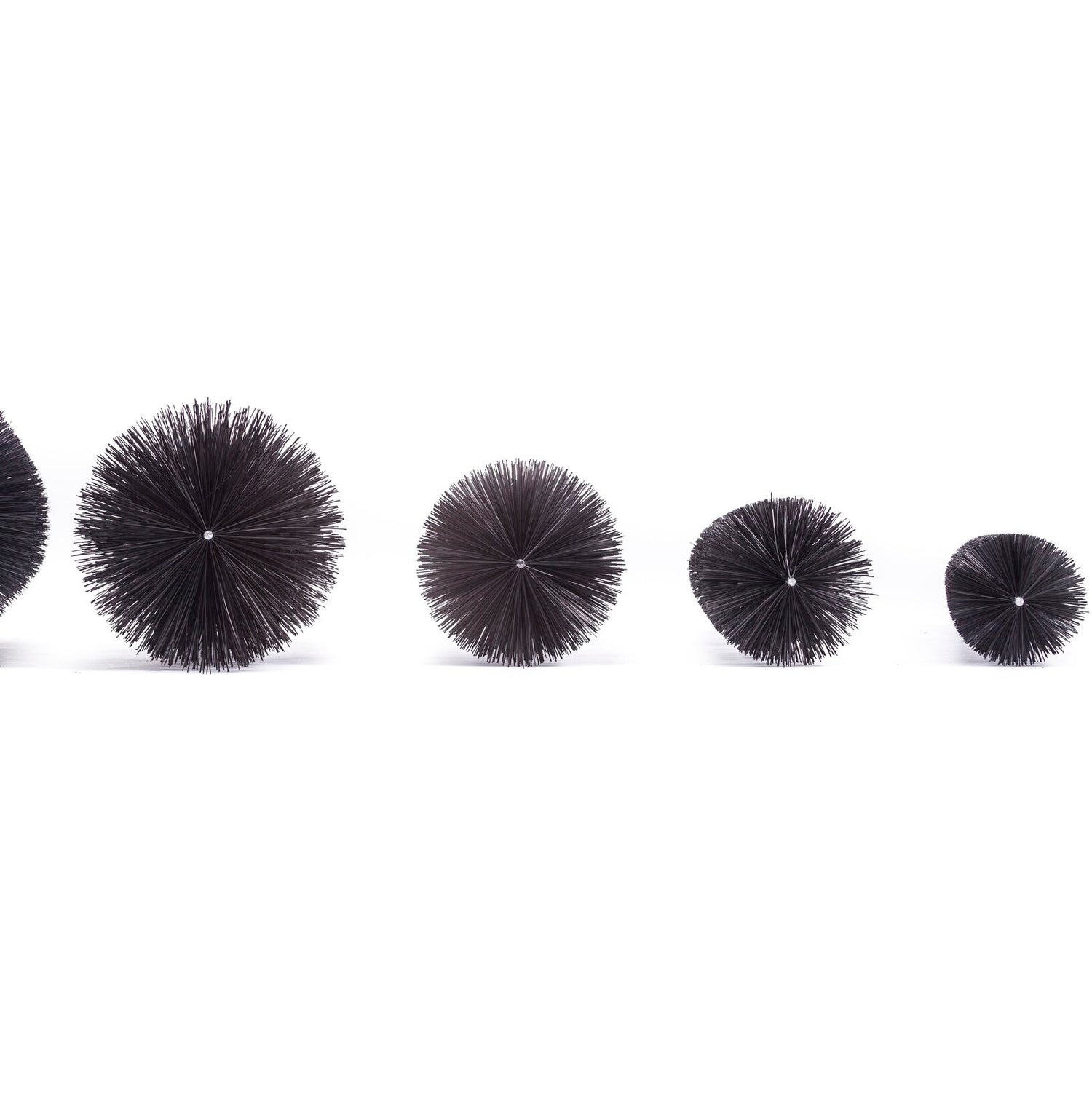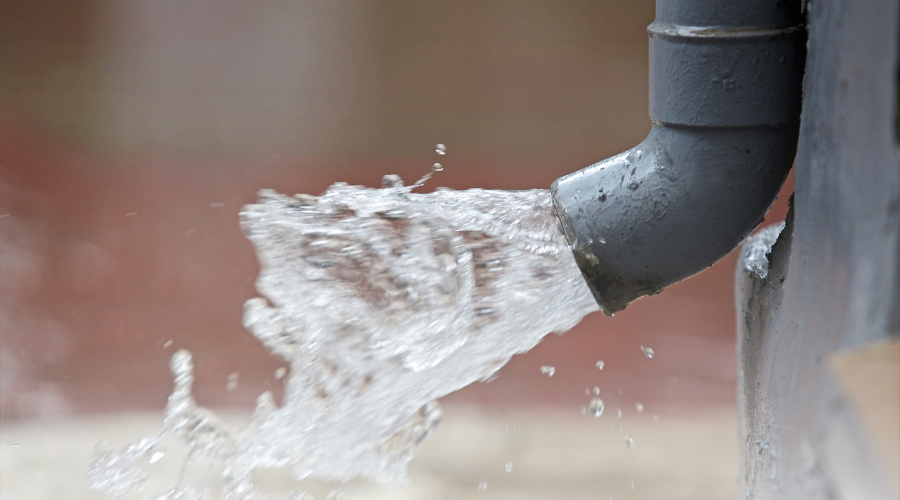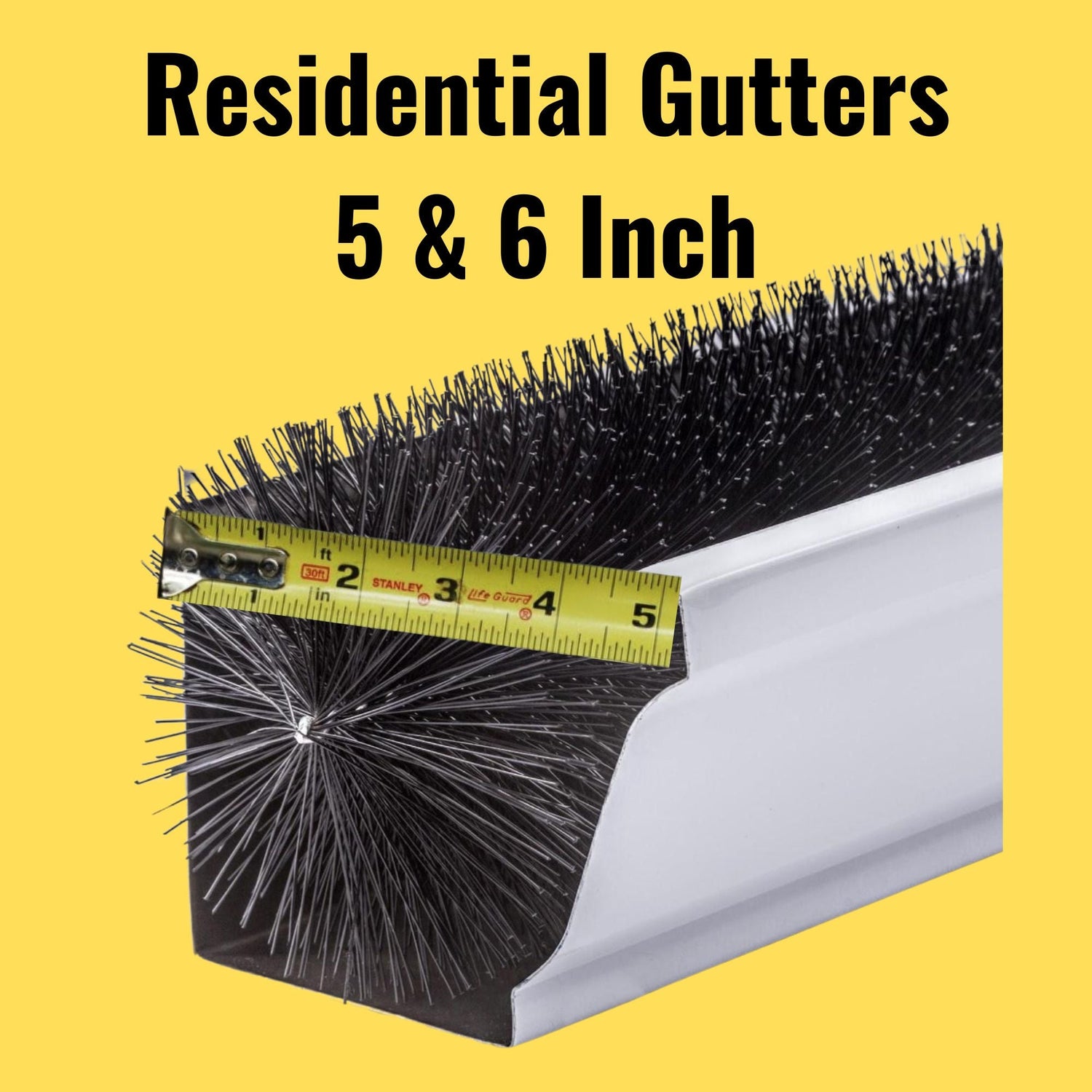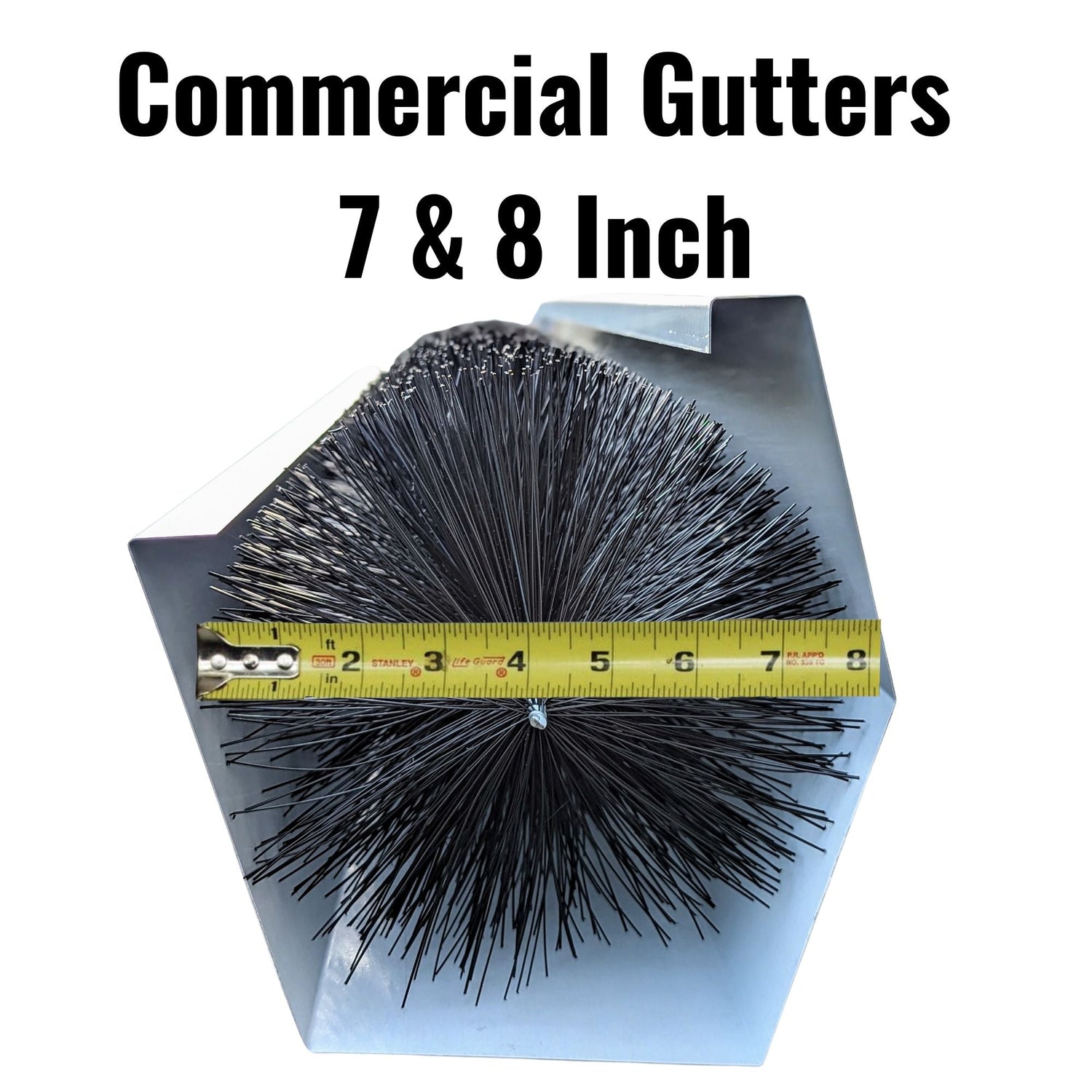Gutter systems play a crucial role in protecting your home from water damage by channeling rainwater away from your roof, walls, and foundation. However, clogged gutter downspouts can lead to serious issues, including water overflow, foundation damage, and roof leaks. Knowing how to clean a clogged rain gutter downspout is essential for maintaining the integrity of your home. This comprehensive guide will walk you through the steps to effectively clean out a clogged gutter downspout and provide tips for preventing future clogs.
Why is it Important to Clean Out a Clogged Gutter Downspout?

Before diving into the cleaning process, it's important to understand why maintaining clear gutter downspouts is so crucial. A clogged gutter downspout can have far-reaching consequences for your home and property, making regular maintenance essential. Here are some key reasons why it's important to keep your gutter downspouts clear and functional:
Prevents Water Damage
A clogged gutter downspout can cause water to overflow and seep into your lower roof, walls, and foundation, leading to significant water damage. Here’s how this happens:
- Roof Leaks: When downspouts are clogged, water can back up into the gutters and overflow onto a lower roof. This water splashing down on the lower roof can seep under shingles, leading to leaks and damage to the roof deck. Over time, this can result in rot, mold growth, and weakened structural integrity.
- Wall Damage: Overflowing water can run down the exterior walls of your home, causing damage to siding, paint, and even the internal walls. Prolonged exposure to moisture can lead to the growth of mold and mildew, which can cause health issues and further structural damage.
- Foundation Issues: One of the most severe consequences of clogged downspouts is water pooling around the foundation of your home. Excess splashing water can cause the soil to expand and contract, leading to cracks in the foundation. This can result in uneven floors, cracked walls, and other structural issues that are costly to repair.
Avoids Pest Infestations

Stagnant water in clogged downspouts can attract pests such as mosquitoes, rodents, and birds. These pests can cause further blockages and damage to your gutter system, as well as pose health risks. Here’s how:
- Mosquitoes: Standing water is an ideal breeding ground for mosquitoes. These insects can carry diseases such as West Nile virus and Zika virus, posing health risks to your family.
- Rodents and Birds: Rodents and birds may be attracted to the shelter provided by clogged gutters. They can create nests in the debris, causing further blockages and damage. Additionally, their droppings can contaminate the area and lead to the spread of diseases.
- Insects: Other insects, such as ants and termites, may also be attracted to the moisture and organic material in clogged downspouts as well as rotting wood. These pests can cause further damage to the wood and other materials in your home, leading to costly repairs.
Protects Landscaping
Water overflowing from clogged downspouts can erode soil and damage plants and shrubs around your home. This can lead to unsightly landscaping and potential soil erosion issues. Here’s why this matters:
- Soil Erosion: Excess water can wash away topsoil, leading to erosion and the destabilization of plant roots. This can result in the loss of plants and a degraded landscape.
- Plant Damage: Overwatering can drown plants, leading to root rot and the eventual death of shrubs, flowers, and other vegetation around your home. This not only affects the appearance of your garden but can also decrease your property’s value.
- Landscape Structure: Hardscaping elements, such as pathways, retaining walls, and garden beds, can also be affected by water overflow. Erosion can undermine these structures, leading to cracks and instability.
Extends Gutter Lifespan
Regularly cleaning your gutter downspouts helps maintain the integrity of your gutter system, extending its lifespan and reducing the need for frequent repairs or replacements. Here’s how:
- Preventing Rust and Corrosion: Standing water in clogged gutters can lead to rust and corrosion, especially in some types of metal gutters. Regular cleaning prevents water from accumulating, reducing the risk of damage.
- Avoiding Stress and Sagging: Clogged gutters can become heavy with water and debris, putting extra stress on the gutter system. This can cause gutters to sag or pull away from the house, leading to structural damage. Regular maintenance ensures that gutters remain light and properly aligned.
- Reducing Repair Costs: By keeping your gutter system clean and functional, you reduce the likelihood of damage that requires costly repairs. Investing time in regular maintenance can save you money in the long run.
Improves Home Aesthetics
Clean gutters and downspouts enhance the overall appearance of your home, improving its curb appeal and maintaining its value. Here’s why this is important:
- First Impressions: Gutters that are clogged and overflowing with debris are unsightly and can give a negative impression of your home. Clean gutters, on the other hand, contribute to a well-maintained and attractive exterior.
- Property Value: Maintaining clean and functional gutters is part of overall home maintenance that can help retain and even increase your property’s value. Potential buyers are more likely to be interested in a home that has been well cared for.
- Preventing Stains: Overflowing water from clogged gutters can cause stains on the exterior walls of your home. These stains can be difficult to remove and may require repainting. Regular gutter cleaning helps prevent this issue, keeping your home looking fresh and well-kept.
How to Clean Out a Clogged Gutter Downspout
Cleaning a clogged gutter downspout involves several steps, from preparing the necessary tools to ensuring the downspout is completely clear. Follow these step-by-step instructions to effectively clean out your clogged gutter downspout.
Step 1: Gather the Necessary Tools and Materials
Before you start cleaning, make sure you have all the necessary tools and materials on hand. Here’s a list of items you’ll need:
- Ladder
- Work gloves
- Safety goggles
- Garden trowel or scoop
- Bucket or trash bag
- Garden hose with a high-pressure nozzle
- Plumber’s snake or auger
- Gutter cleaning attachment (optional)
- Screwdriver or drill (if you need to remove the downspout)
- Waterproof sealant (for any necessary repairs)
Step 2: Ensure Safety First
Safety is paramount when cleaning gutters, especially if you’re working on a ladder. Here are some safety tips to keep in mind:
- Stabilize the Ladder: Ensure your ladder is stable and placed on a flat, firm surface. Use a ladder stabilizer if necessary.
- Wear Protective Gear: Wear work gloves to protect your hands from sharp debris and safety goggles to shield your eyes from dirt and water.
- Have a Helper: If possible, have someone assist you by holding the ladder and handing you tools as needed.
Step 3: Remove Debris from the Gutters
Start by removing any visible debris from the gutters. Use a garden trowel or scoop to collect leaves, twigs, and other debris, placing them in a bucket or trash bag. This will help prevent the debris from being washed down the drain and causing further blockages.
Step 4: Flush the Gutters with Water
Once the visible debris is removed, use a garden hose with a high-pressure nozzle to flush the gutters. This will help dislodge any smaller debris and dirt that may be stuck to the sides of the gutters. Start at the end opposite the downspout and work your way towards it, ensuring the water flows freely towards the downspout.
Step 5: Check for Clogs in the Downspout
After flushing the gutters, check for clogs in the downspout. You can do this by running water from the hose into the top of the downspout. If the water doesn’t flow freely out of the bottom, there is likely a clog in the downspout.
Step 6: Remove the Downspout (if necessary)
If the clog is severe, you may need to remove the downspout to access the clog more easily. Use a screwdriver or drill to remove the screws or brackets securing the downspout to the gutter and house. Carefully detach the downspout and set it aside.
Step 7: Use a Plumber’s Snake or Auger
Insert a plumber’s snake or auger into the downspout from the top. Push the snake through the downspout, rotating it as you go to break up the clog. If you encounter resistance, it’s likely the snake has reached the clog. Continue to rotate and push the snake until the clog is dislodged.
Step 8: Flush the Downspout
After using the plumber’s snake, flush the downspout with water to ensure the clog is completely cleared. Hold the downspout upright and run water through it, checking to see if it flows freely from top to bottom. Repeat the process if necessary until the downspout is clear.
Step 9: Reattach the Downspout
Once the downspout is clear, reattach it to the gutter and house using the screws or brackets you removed earlier. Ensure it is securely fastened and aligned correctly to facilitate proper water flow.
Step 10: Seal Any Leaks
Inspect the gutter and downspout for any leaks or damage. Use a waterproof sealant to seal any small cracks or holes. This will help prevent future leaks and maintain the integrity of your gutter system.
Step 11: Test the System
Finally, test the entire gutter system by running water through the gutters and downspouts. Ensure the water flows freely and drains properly away from your home. Check for any remaining clogs or leaks and address them as needed.
Preventing Future Clogs in Gutter Downspouts
Cleaning your gutter downspouts regularly is essential, but taking preventive measures can help reduce the frequency of clogs and make maintenance easier. Here are some tips to prevent future clogs in your gutter downspouts:
Install Gutter Guards

Gutter guards are an excellent way to prevent debris from clogging your gutters. They act as a barrier, allowing water to flow through while keeping leaves, twigs, and other debris from clogging. There are several types of gutter guards available, including mesh screens, foam inserts, and brush guards. Choose the one that best suits your needs and budget.
Trim Overhanging Branches
Trees close to your home can drop leaves, twigs, and other debris into the gutters. Trim overhanging branches to minimize the amount of debris that can fall into the gutters and reduce the frequency of gutter cleaning.
Regular Inspections
Regularly inspect your gutters and downspouts for signs of clogs, damage, or leaks. Address any issues promptly to prevent further damage and ensure your gutters function correctly. It’s recommended to inspect your gutters at least twice a year, in the spring and fall.
Clean Gutters After Storms
Heavy storms can deposit a significant amount of debris into your gutters. After a storm, check your gutters and remove any debris that may have accumulated. This will help prevent clogs and ensure your gutter system remains functional.
Ensure Proper Installation and Slope
Ensure that your gutters are properly installed and have the correct slope to facilitate water flow. Gutters should be installed with a slight pitch towards the downspouts to prevent standing water and promote efficient drainage. If your gutters are not sloped correctly, water can pool and lead to clogs and overflows.
Use Downspout Screens
Downspout screens are small screens that fit over the top of the downspout opening. They help to filter out debris and prevent it from entering the downspout, reducing the risk of clogs. Downspout screens are an inexpensive and easy-to-install solution for preventing clogs in your gutter downspouts.
Professional Maintenance
If you’re unable to clean and maintain your gutters yourself, consider hiring a professional gutter cleaning service. Professionals have the tools and experience to clean gutters thoroughly and can also identify and address any issues with your gutter system. Regular professional maintenance can help ensure your gutters remain in top condition and prevent costly repairs.
Maintaining a clean and functional gutter system is crucial for protecting your home from water damage. A clogged gutter downspout can lead to a variety of problems, including water overflow, foundation damage, and roof leaks. By following the step-by-step instructions provided in this guide, you can effectively clean out your clogged gutter downspout and ensure your gutters remain clear and efficient.
Regular cleaning, installing gutter guards, trimming overhanging branches, conducting regular inspections, and seeking professional help when needed are all essential steps in maintaining your gutter system. Taking these preventive measures will help reduce the frequency of clogs, extend the lifespan of your gutters, and protect your home from water damage.
By making gutter maintenance a priority, you can keep your home dry, secure, and looking its best. So, the next time you notice a clogged gutter downspout, remember these tips and take action to keep your gutters in optimal condition.
Key Takeaways
- Prevent Water Damage: Cleaning clogged gutter downspouts prevents water overflow, protecting your home from water damage and foundation issues.
- Avoid Pest Infestations: Keeping gutters clean deters pests like mosquitoes and rodents, which thrive in stagnant water.
- Extend Gutter Lifespan: Regular maintenance helps extend the life of your gutter system, reducing the need for frequent repairs or replacements.
- Improves Home Aesthetics: Clean gutters enhance the curb appeal of your home, maintaining its value and appearance.
- Follow Safety Measures: Always prioritize safety when cleaning gutters, using proper tools and protective gear to avoid accidents.
About GutterBrush
At GutterBrush, we offer innovative gutter protection systems for both Residential and Commercial properties. Our unique brush technology, recognized by Home & Garden TV, The Family Handyman, At Home with Gary Sullivan, and Home Depot, ensures your gutters remain clog free while filtering rainwater, reducing the need to frequently buy gutter guards.
A family-owned company serving American homesteads since 2004, we're proud to have over 1200 5-star reviews, supported by a 10-year material warranty and a 365-day refund policy.




